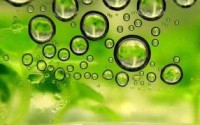Green Chemistry: from grave to cradle
- Date
- 11 Oct 2011
- Start time
- 7:30 PM
- Venue
- Tempest Anderson Hall
- Speaker
- Dr Avtar Matharu

Green Chemistry: from grave to cradle
Dr Avtar Matharu, Deputy Director, Green Chemistry Centre of Excellence, University of York
Sustainability is a much-used modern day buzz word that encompasses economic, social and environmental values. Sustainable development is development that meets the needs of the present without compromising the ability of future generations to meet their own needs. However, modern day society lives in a relatively comfortable world where many goods and products are derived from crude oil, for example, feedstock chemicals for transport fuels, plastics and household goods. For whatever reason, at the end of their useful life these goods end up in landfill or incinerators (cradle to grave). Oil is a finite resource, supplies are limited. In the future we need to make more use of what we already have above ground. Green Chemistry offers innovative solutions that lead to a circular economy (cradle to cradle) whereby waste is considered as a new resource. The lecture will take you in to the comfort of your home to show how everyday materials (LCD TV, carpets, kitchen units) may be recycled and re-used in innovative ways.
Report
by Peter Hogarth
We are surrounded by goods and products derived from oil, most of which end up in landfill or incinerators. Green Chemistry provides the means to avoid this.
Agricultural waste such as wheat straw can be recycled into a wood substitute, compressed and bound with an adhesive extracted from the ash of wheat straw burnt to generate power.
A problem with recycling is the separation of different components. Carpets can be induced to disintegrate into their recyclable constituents on demand, by using a switchable adhesive (itself made from waste material). More difficult to separate are the components of mobile phones and laptops, which include scarce elements such as gold and indium. The liquid crystal material of the LCD screen can be extracted and re-used by adapting the process used to decaffeinate coffee.
An enthralling account of some of the ingenious ways in which chemistry is being used to exploit waste as a valuable resource.